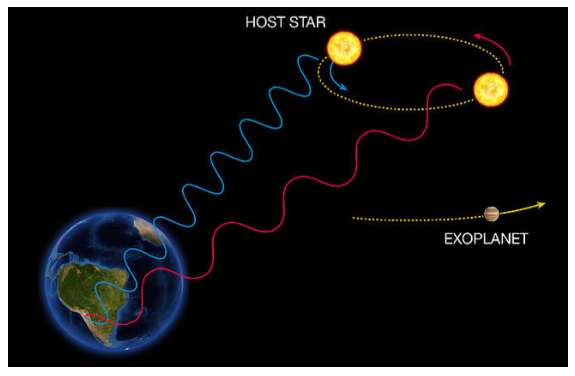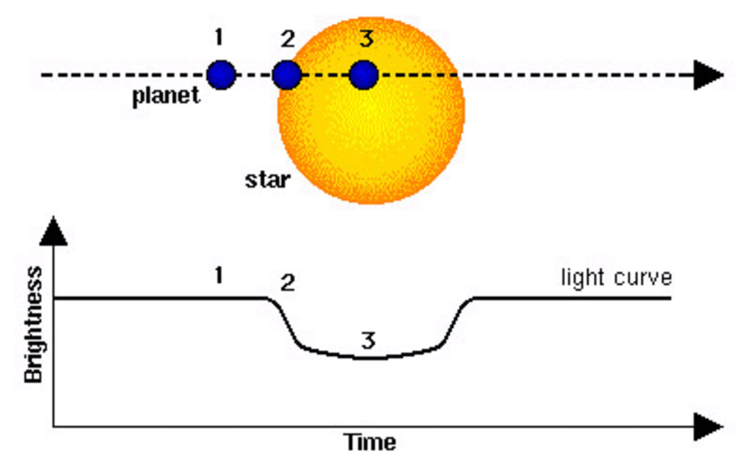Discovering Exoplanets
1. Doppler spectroscopy method of the exoplanets radical velocity
The first technique that yielded many planet detections is very high-resolution stellar spectroscopy. The Doppler effect lets astronomers measure the star’s radial velocity: that is, the speed of the star, toward us or away fromus, relative to the observer. If there is a massive planet in orbit around the star, the gravity of the planet causes the star to wobble, changing its radial velocity by a small but detectable amount. The distance of the star does not matter, as long as it is bright enough for us to take very high quality spectra.

2. Exoplanets transit method
The second method for indirect detection of exoplanets is based not on the motion of the star but on its brightness. When the orbital plane of the planet is tilted or inclined so that it is viewed edge-on, we will see the planet cross in front of the star once per orbit, causing the star to dim slightly; this event is known as transit. The picture shows a sketch of the transit at three time steps: (1) out of transit, (2) the start of transit, and (3) full transit, along with a sketch of the light curve, which shows the drop in the brightness of the host star. The amount of light blocked—the depth of the transit—depends on the area of the planet (its size) compared to the star. If we can determine the size of the star, the transit method tells us the size of the planet.

The interval between successive transits is the length of the year for that planet, which can be used (again using Kepler’s laws) to find its distance from the star.
3. Kepler's third law
In 1619, Kepler discovered a basic relationship to relate the planets’ orbits to their relative distances from the Sun. We define a planet’s orbital period, (P), as the time it takes a planet to travel once around the Sun. Also, recall that a planet’s semimajor axis, a, is equal to its average distance from the Sun. The relationship, now known as Kepler’s third law, says that a planet’s orbital period squared is proportional to the semimajor axis of its orbit cubed
- Kepler’s third law: The square of a planet’s orbital period is directly proportional to the cube of the semimajor axis of its orbit. Kepler’s three laws provide a precise geometric description of planetary motion within the framework of the Copernican system. With these tools, it was possible to calculate planetary positions with greatly improved precision. Still, Kepler’s laws are purely descriptive: they do not help us understand what forces of nature constrain the planets to follow this particular set of rules. That step was left to Isaac Newton.
